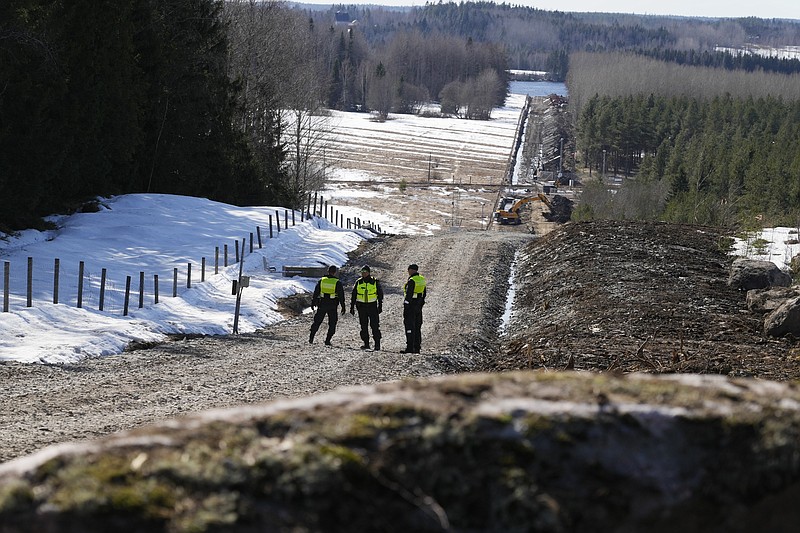IMATRA, Finland -- The construction of barbed-wired fence along Finland's long border with Russia -- primarily meant to curb illegal migration -- has broken ground near the southeastern town of Imatra less than two weeks after the Nordic country joined NATO.
The Finnish Border Guard showcased Friday the building of the initial 1.8 mile stretch of the fence to be erected in Pelkola near a crossing point off Imatra, a quiet lakeside town of some 25,000 people.
Finland's 832-mile border with Russia is the longest of any European Union member.
Construction of the border fence is an initiative by the border guard that was approved by Prime Minister Sanna Marin's government amid wide political support last year. The main purpose of the 10-foot high steel fence with a barbed-wire extension on top is to prevent illegal immigration from Russia and give reaction time to authorities, Finnish border officials say.
In 2015-16, Moscow attempted to influence Finland by organizing large numbers of asylum-seekers to northern Finnish crossing points in the Arctic Lapland region. Russian authorities were seen deliberately ushering thousands of asylum-seekers - mostly from Middle East nations - to those border crossing points.
Finnish President Sauli Niinisto held talks with Russian President Vladimir Putin. The flow of migrants stopped shortly thereafter.
This is a scenario that Finland -- a nation 5.5 million people that officially became the 31st member of NATO April 4 -- wants to prevent from repeating itself.
Border officials are quick to acknowledge, however, that it was Russia's invasion of Ukraine last February -- the main reason for Finland's quick push to join NATO after decades of military nonalignment -- that prompted construction of the border fence.
"[The] border barrier fence was no kind of political topic before the war [in Ukraine]. And actually, it wasn't a kind of plan of the Finnish border guard," Brig. Gen. Jari Tolppanen, head of the technical division at the Finnish Border Guard, told The Associated Press. "All changed after the attack [of Russia against Ukraine]."
The pilot section of the fence is scheduled to be completed by this summer, while the barrier will eventually be extended to a maximum of 124 miles.
"In this new situation, we must have much more credible and much more independent border control," Tolppanen said. "We need to strengthen our resources. And the fence is necessary in order to manage, for example, large-scale illegal immigration."
Erkki Jouhki, who works as a town planner, agreed but also stressed Finland's military capabilities. NATO membership gives Finland "a strong back but we have a very strong army. it's very well [armed] ... it's a very modern army here because of Russia."
The border fence project is estimated to cost $422 million and scheduled to be completed by 2026
Information for this article was contributed by Jari Tanner of The Associated Press.

